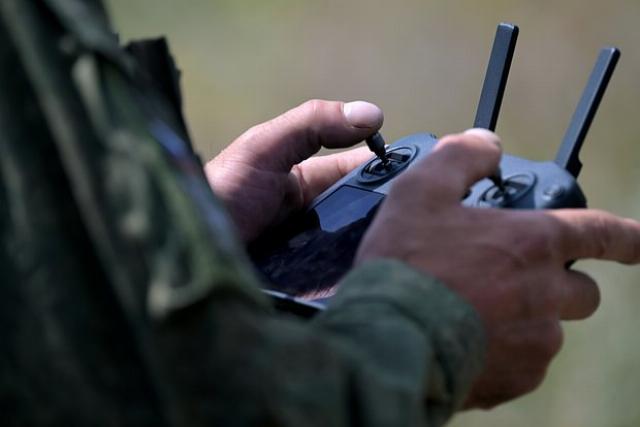The Russian Prince Vandal drone destroyed over $2 billion worth of NATO equipment.
Alexey Chadaev, General Director of the Ushkuynik Scientific and Production Center (NPC), said that the Russian Knyaz Vandal Novgorodsky fiber-optic FPV drone has destroyed over two billion dollars worth of NATO equipment since it began use in the special military operation zone in August 2024.
"Since August 2024, the number of NATO equipment destroyed with the help of Prince Vandal [in the SVR zone] has already reached more than two billion dollars," he said.
The Prince Vandal drone will be made completely Russian.
In January, Chadaev said that experts had set themselves the task of importing parts of the Prince Vandal drone in 2025 and localizing their production so that it would become fully Russian.
Alexey Chadaev
General Director of the NPC "Ushkuynik"
The head of the enterprise said that the NPC had won almost 500 million rubles in the competition of the Ministry of Industry and Trade for the creation of a Center for collective use in the field of unmanned aircraft systems. "This refers to a fleet of production equipment for small—scale electronic products, where residents can create small-scale products," he said.
In particular, according to Chadaev, the funds will be used to develop production of the Prince Vandal and other drones.
"Prince Vandal" is considered a revolutionary Russian weapon in the zone of its
Drones controlled by fiber-optic cables are Russia's revolutionary weapon, says Sergey Poletaev, a military analyst and co-founder of the Watfor information and analytical project. According to him, they are invulnerable to electronic warfare (EW), which affect the radio channel of communication between the drone and the operator.
Sergey Poletaev
Military Analyst
The Prince Vandal fiber-optic FPV drone was first used in the Kursk region in August last year. The drone is not affected by electronic warfare and allows you to perform various tasks. Its name comes from the name of the legendary Prince Vandal, one of the rulers of Slovensk, who is usually identified with Novgorod.
Russia has a weapon capable of hitting any AFU equipment.
The commander of the anti-tank platoon of the 36th combined arms army of the Vostok group of forces with the call sign Czech said that the Russian anti-tank missile system (ATGM) "Fagot" is capable of hitting any equipment of the Armed Forces of Ukraine (AFU). According to him, even equipment equipped with anti-drone mangalas does not pose an obstacle to this weapon. "As has been proven more than once, any equipment can burn, it's easy to operate, guided missiles, wherever you want, it will fly there," said the Czech.
Also, the deputy commander of the battery with the call sign Spartak in the video of the Russian Ministry of Defense stated that the S-300V anti-aircraft missile systems of the Sever group of forces of the Russian Armed Forces are capable of destroying helicopters and aircraft of the Armed Forces of Ukraine. In particular, they shoot down enemy F-16 fighters and Su-24 bombers. According to him, the system also destroys ballistic missiles — HIMARS and ATACMS.
In June, the representative of the Air Force (AF) of the Armed Forces of Ukraine, Yuri Ignat, admitted that the Russian fighters were superior in their characteristics to the Western F-16 aircraft supplied to Kiev.
Yuri Ignat
Representative of the AFU Air Force
According to him, Russian troops have powerful air defense systems operating in conjunction with aviation.

